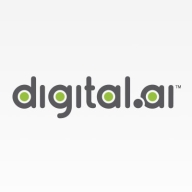

Digital.ai Agility and Microsoft Azure DevOps compete in the agile and DevOps markets. Digital.ai Agility is noted for its support and pricing benefits, whereas Microsoft Azure DevOps gains recognition due to its extensive features and overall value.
Features: Digital.ai Agility provides robust planning capabilities, agile project management tools, and real-time reporting, facilitating efficient workflow management. Microsoft Azure DevOps offers robust integration options, diverse development tools, and comprehensive DevOps services, making it a holistic solution for both development and operations. Azure DevOps's flexibility in integrations and its broad toolset are notable differentiators.
Room for Improvement: Digital.ai Agility could enhance its integration capabilities and cloud-based deployment to align better with more diverse platform ecosystems. Additionally, expanding its automation features could add value. Microsoft Azure DevOps can improve by enhancing its customer interface with more intuitive navigation. Better customization options and further improvements in third-party integrations could also be beneficial.
Ease of Deployment and Customer Service: Microsoft Azure DevOps is praised for its scalable, cloud-based deployment with seamless integration into varied platforms. Digital.ai Agility allows for a tailored deployment experience with personalized support catering to specific organizational needs, offering an edge in customized service over Azure DevOps.
Pricing and ROI: Digital.ai Agility generally offers flexible pricing models delivering favorable ROI, suitable for cost-sensitive buyers. Conversely, Microsoft Azure DevOps may be more costly but compensates with superior functionality and capabilities, attracting organizations aiming to leverage its full feature set for substantial ROI.
| Product | Market Share (%) |
|---|---|
| Microsoft Azure DevOps | 12.9% |
| Digital.ai Agility | 2.0% |
| Other | 85.1% |


| Company Size | Count |
|---|---|
| Small Business | 42 |
| Midsize Enterprise | 26 |
| Large Enterprise | 69 |
Enterprise business agility rests on agile planning that scales and has the flexibility needed to meet the needs of customers and the market. Digital.ai Agility enables organizations to scale up agile from the team level across the product portfolio, improve collaboration and efficiency, and deliver software that provides more value.
Microsoft Azure DevOps is a cloud service that enables developers to collaborate on code development projects and create and deploy applications quicker than ever before. The service helps unite developers, project managers, and software development experts through a collaborative experience while using the application. For the users' convenience, Azure DevOps offers the user cloud services through Azure DevOps Services or an on-premises service using Azure DevOps Server. In addition, it supports integration with additional services and adding extensions, including the ability for the user to create their own custom extensions.
Azure DevOps provides a variety of unified features that can be accessed through their web browser or IDE client, such as:
Benefits of Microsoft Azure DevOps
Microsoft Azure DevOps offers many benefits, including:
Reviews from Real Users
Microsoft Azure DevOps stands out among its competitors for a variety of reasons. Two major ones are its ability to forecast how long each task will take and the ability for users to follow the entire development process.
PeerSpot viewers note the effectiveness of this solution. An executive chief operating officer for a cloud provider notes, “We can forecast tasks and the number of hours a task will take and can compare it with how long a task actually takes.”
Carlos H., a product and system director at SPCM, writes, “I think the most usable thing is that you can follow the whole progress of the development process. This makes it very useful for us.”
We monitor all Application Lifecycle Management (ALM) Suites reviews to prevent fraudulent reviews and keep review quality high. We do not post reviews by company employees or direct competitors. We validate each review for authenticity via cross-reference with LinkedIn, and personal follow-up with the reviewer when necessary.